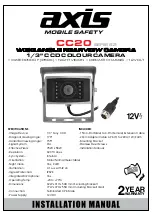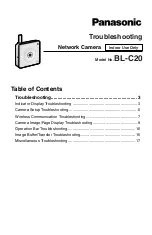
Alpha NIR User’s Guide 412-0007-10 Ver 150
INDIGO OPERATIONS
4 Application Note on Time Stamps in IRvista 2.51
Austin Richards
FLIR Systems, Indigo Operations
8-2-04
LabView writes a date/time stamp as a double precision number representing the number
of seconds elapsed since 12AM, 1 Jan 1904 (not 1994). This number is in IEEE-754
floating point format, so that a DP number is 64 bits (8 bytes), starting from sign [63], 11
bit binary exponent [62-52] (with 1023 offset), and 52 bit binary fraction 'f' [51-00] (with
implicit 1.f multiplier).
There is a VI called "Get Date/Time String " in LabVIEW that takes the seconds and
converts them into readable strings.
The Binary Date Stamp is defined as such:
First, take seconds from 12:00 am, Jan 1, 1904 Universal time. This is a real number with
seconds accurate to 1 millisecond.
For example: Time in seconds is 3132775470.545 (4/9/2003 4:24:31 PM).
1) Take time and separate out milliseconds, multiply msec by 1000 and save this number
, which is 545.
2) Take remaining whole seconds (3132775470) and convert to a 32 bit unsigned binary
number.
3) Take first 12 bits and convert to a 16 bit unsigned integer = 3400
4) Take 2nd 12 bits and convert to a 16 bit unsigned integer = 2981
5) Take last 8 bits and convert to a 16 bit unsigned integer = 186
6) Take numbers from steps 3, 4, 5, and 1 and put into a series of 4 numbers = 3400,
2981, 186, 545
7) Save to file for a time stamp.
21

































